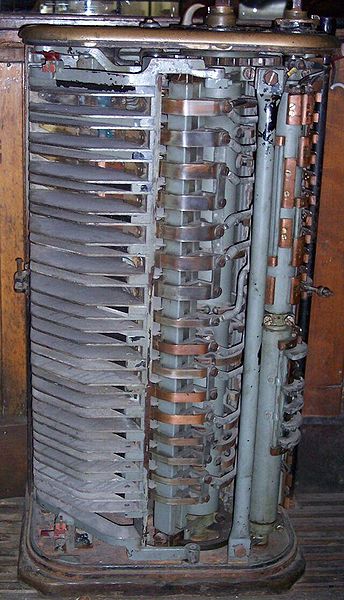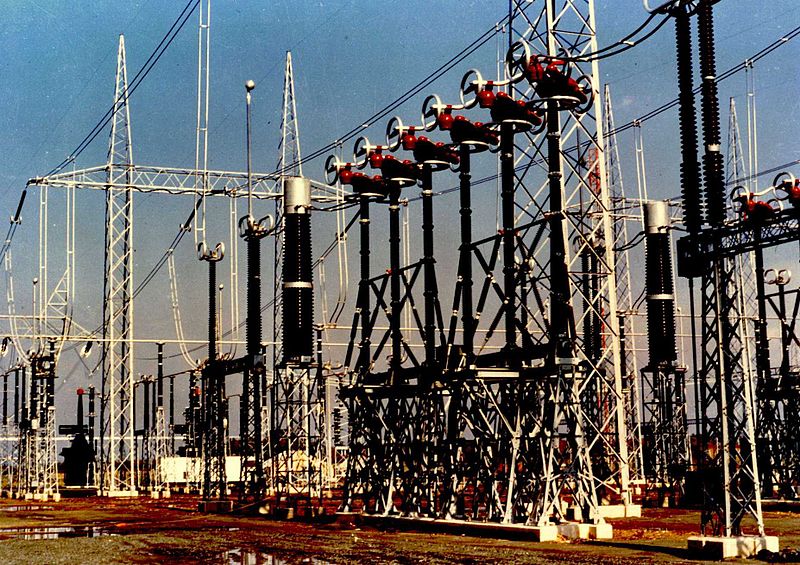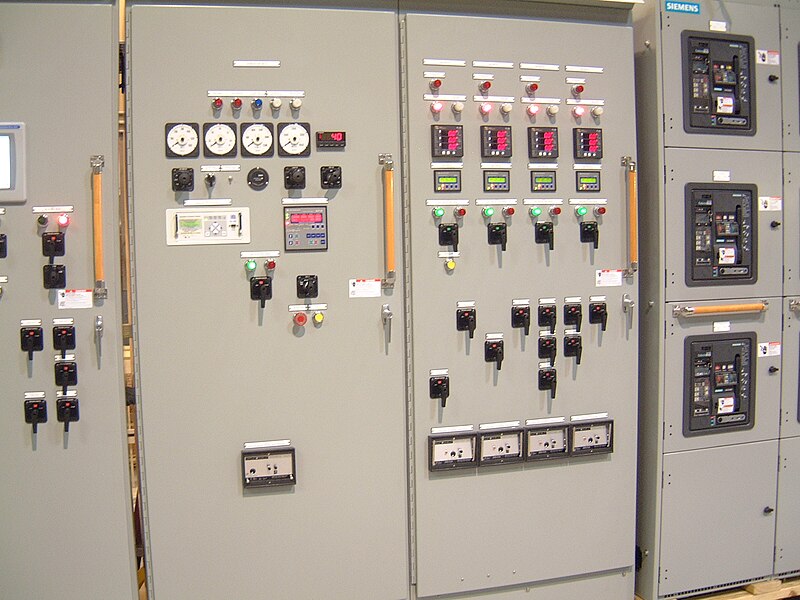

Switchgear is often inspected using thermal imaging to assess the state of the system and predict failures before they occur. Other methods include partial discharge (PD) testing, using either fixed or portable testers, and acoustic emission testing using surface-mounted transducers (for oil equipment) or ultrasonic detectors used in outdoor switchyards. Temperature sensors fitted to cables to the switchgear can permanently monitor temperature build-up. SF6 equipment is invariably fitted with alarms and interlocks to warn of loss of pressure, and to prevent operation if the pressure falls too low.
 In an electric power system, switchgear is the combination of disconnect switches, fuses or circuit breakers used to control, protect and isolate electrical equipment. Switchgear is used both to de-energize equipment to allow work to be done and to clear faults downstream. This type of equipment is important because it is directly linked to the reliability of the electricity supply.
In an electric power system, switchgear is the combination of disconnect switches, fuses or circuit breakers used to control, protect and isolate electrical equipment. Switchgear is used both to de-energize equipment to allow work to be done and to clear faults downstream. This type of equipment is important because it is directly linked to the reliability of the electricity supply.
The very earliest central power stations used simple open knife switches, mounted on insulating panels of marble or asbestos. Power levels and voltages rapidly escalated, making opening manually operated switches too dangerous for anything other than isolation of a de-energized circuit. Oil-filled equipment allowed arc energy to be contained and safely controlled. By the early 20th century, a switchgear line-up would be a metal-enclosed structure with electrically operated switching elements, using oil circuit breakers. Today, oil-filled equipment has largely been replaced by air-blast, vacuum, or SF6 equipment, allowing large currents and power levels to be safely controlled by automatic equipment incorporating digital controls, protection, metering and communications.
 High voltage switchgear was invented at the end of the 19th century for operating motors and other electric machines. The technology has been improved over time and can be used with voltages up to 1,100 kV .
High voltage switchgear was invented at the end of the 19th century for operating motors and other electric machines. The technology has been improved over time and can be used with voltages up to 1,100 kV .
Typically, the switchgear in substations is located on both the high voltage and the low voltage side of large power transformers. The switchgear on the low voltage side of the transformers may be located in a building, with medium-voltage circuit breakers for distribution circuits, along with metering, control, and protection equipment. For industrial applications, a transformer and switchgear line-up may be combined in one housing, called a unitized substation or USS.
Switchgear for low voltages may be entirely enclosed within a building. For transmission levels of voltage (high voltages over 66 kV), often switchgear will be mounted outdoors and insulated by air, although this requires a large amount of space. Gas insulated switchgear used for transmission-level voltages saves space compared with air-insulated equipment, although it has a higher equipment cost. Oil insulated switchgear presents an oil spill hazard.
At small substations, switches may be manually operated, but at important switching stations on the transmission network all devices have motor operators to allow for remote control.
A piece of switchgear may be a simple open-air isolator switch or it may be insulated by some other substance. An effective although more costly form of switchgear is gas insulated switchgear (GIS), where the conductors and contacts are insulated by pressurized sulfur hexafluoride gas (SF6). Other common types are oil or vacuum insulated switchgear.
The combination of equipment within the switchgear enclosure allows them to interrupt fault currents of thousands of amps. A circuit breaker (within a switchgear enclosure) is the primary component that interrupts fault currents. The quenching of the arc when the circuit breaker pulls apart the contacts open (disconnects the circuit) requires careful design. Circuit breakers fall into these four types:
Oil: Oil circuit breakers rely upon vaporization of some of the oil to blast a jet of oil through the arc.
Gas: Gas (SF6) circuit breakers sometimes stretch the arc using a magnetic field, and then rely upon the dielectric strength of the SF6 to quench the stretched arc.
Vacuum:Vacuum circuit breakers have minimal arcing (as there is nothing to ionize other than the contact material), so the arc quenches when it is stretched to a very small amount (<2–3 mm). At or near current zero the arc is not hot enough to maintain a plasma, and current ceases; the gap can then withstand the rise of voltage. Vacuum circuit breakers are frequently used in modern medium-voltage switchgear to 35,000 volts. Unlike the other types, they are inherently unsuitable for interrupting DC faults.
To help ensure safe operation sequences of switchgear, trapped key interlocking provides predefined scenarios of operation. For example, if only one of two sources of supply are permitted to be connected at a given time, the interlock scheme may require that the first switch must be opened to release a key that will allow closing the second switch. Complex schemes are possible.
Indoor switchgear can also be type tested for internal arc containment (e.g. IEC 62271-200). This test is important for user safety as modern switchgear is capable of switching large currents.
The increasing awareness of dangers associated with high fault levels has resulted in network operators specifying closed door operation for operating earth switches and racking breakers. Many European power companies have banned operators from switch rooms while operating. Remote racking systems are available which allow an operator to rack switchgear from a remote location without the need to wear a protective arc flash hazard suit.
A single line-up may incorporate several different types of devices, for example, air-insulated bus, vacuum circuit breakers, and manually operated switches may all exist in the same row of cubicles.
Ratings, design, specifications and details of switchgear are set by a multitude of standards. In North America mostly IEEE and ANSI standards are used, much of the rest of the world uses IEEEstandards, sometimes with local national derivatives or variations. The content is taken from wikipidea.
Ratings, design, specifications and details of switchgear are set by a multitude of standards. In North America mostly IEEE and ANSI standards are used, much of the rest of the world uses IEEEstandards, sometimes with local national derivatives or variations. The content is taken from wikipidea.
No comments:
Post a Comment